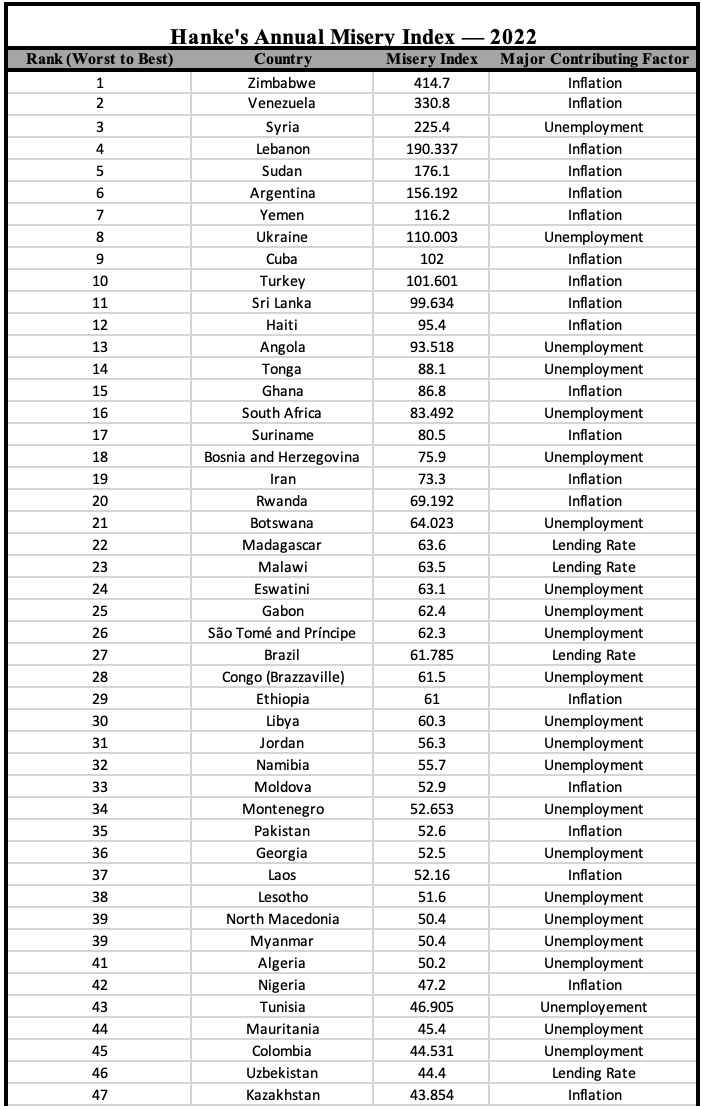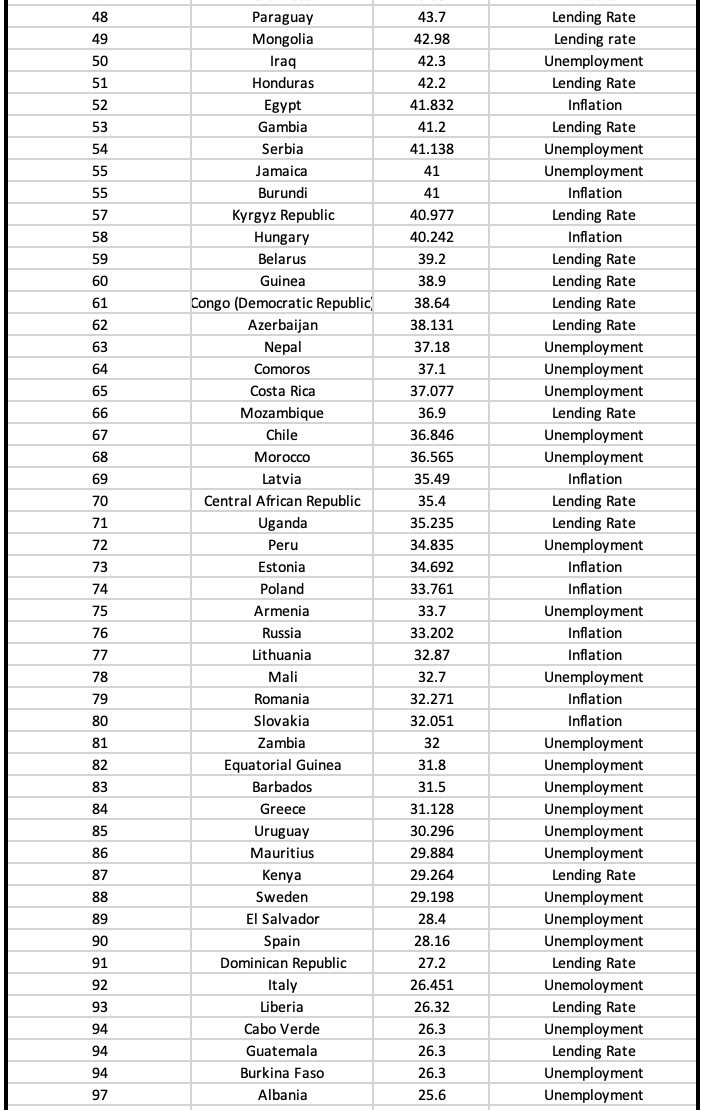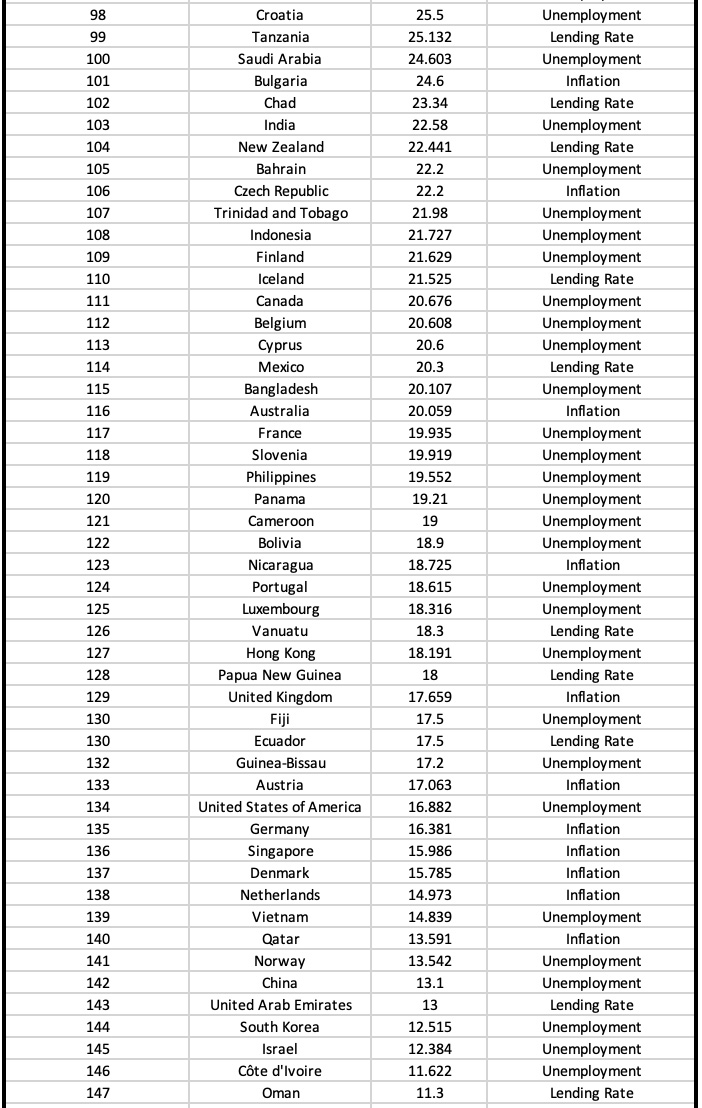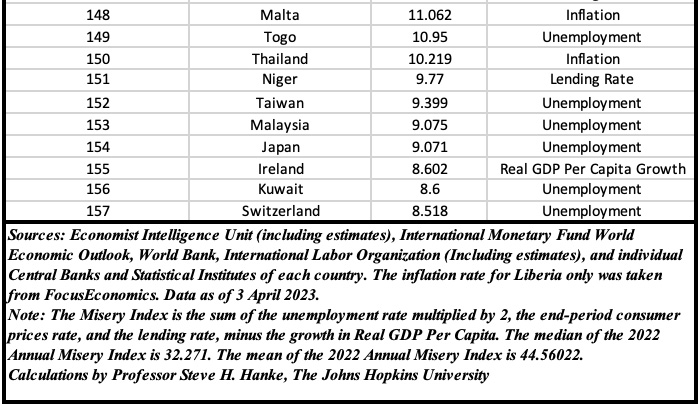While the list of the top-ten might surprise some, good numbers are good numbers, at least for now.
Hanke's 2022 Misery Index--Who's Miserable and Who's Happy? | Steve H. Hanke
"The human condition lies on a vast spectrum between “miserable” and “happy.” In the economic sphere, misery tends to flow from high inflation, steep borrowing costs, and unemployment. The surefire way to mitigate that misery is through economic growth. Comparing countries’ metrics can tell us a lot about where in the world people are sad or happy.
Hanke’s Annual Misery Index (HAMI) gives us the answers. My version of the misery index is the sum of the year-end unemployment (multiplied by two), inflation, and bank-lending rates, minus the annual percentage change in real GDP per capita. Higher readings on the first three elements are “bad” and make people more miserable. These “bads” are offset by a “good” (real GDP per capita growth), which is subtracted from the sum of the bads to yield a HAMI score. For more on this index, please see here. . .
This year’s HAMI includes 157 countries (see the accompanying table).




Zimbabwe, Venezuela, Syria, Lebanon, Sudan, Argentina, Yemen, Ukraine, Cuba, Turkey, Sri Lanka, Haiti, Angola, Tonga, and Ghana comprise the 15 most miserable countries in the world.
. . .
Now, let’s turn to a happier page and take a look at the least miserable countries in the world.
Switzerland has the lowest HAMI score in the world. reason for that is the Swiss debt brake. The debt brake has worked like a charm. Unlike most countries, Switzerland’s debt-to-GDP ratio has been on a downward trend in the last two decades, since it enshrined its debt brake into its constitution in a 2002 national referendum. In 2002, central-government debt stood at 29.7 percent of GDP, and by 2018 had been reduced to 18.7 percent. It’s hard to beat a democracy in which most major decisions can, if enough of the electorate insists, be put to a popular vote.
HAMI = [(Unemployment (2.166%) * 2) + Inflation (2.84%) + Bank‐Lending Rate (2.646%)] − Real GDP Growth (1.3%) = 8.518
Kuwait, even with squabbling amongst politicians, put in a solid performance across the board in 2022. As the arithmetic below shows, the “bads” were minimized, and the “good,” was, well, pretty good (4.5 percent per year real GDP growth).
HAMI = [(Unemployment (2.9%) * 2) + Inflation (3.1%) + Bank‐Lending Rate (4.2%)] − Real GDP Growth (4.5%) = 8.6
Ireland, even with a strong performance in 2022, faces threats; namely, the OECD International Tax Agreement. Ireland signed up to the OECD International Tax Agreement in 2021, and, being a well-known tax haven, this might take some wind out of Ireland’s sails after the agreement comes into force in 2024. For now, things look good.
HAMI = [(Unemployment (4.5%) * 2) + Inflation (8.302%) + Bank‐Lending Rate (2.7%)] − Real GDP Growth (11.4%) = 8.602
Thanks to strong economic performances, Switzerland, Kuwait, Ireland, Japan, Malaysia, Taiwan, Niger, Thailand, Togo, and Malta were the top-ten “happiest” countries in 2022. While the list of the top-ten might surprise some, good numbers are good numbers, at least for now."
Steve H. Hanke is a Senior Fellow at the Independent Institute and Professor of Applied Economics and Founder and Co-Director of the Institute for Applied Economics, Global Health, and the Study of Business Enterprise at Johns Hopkins University.

No comments:
Post a Comment